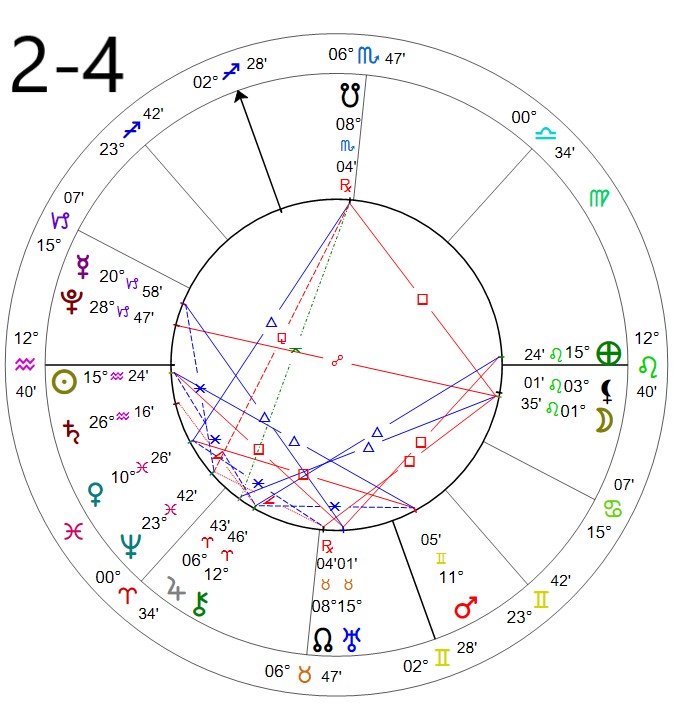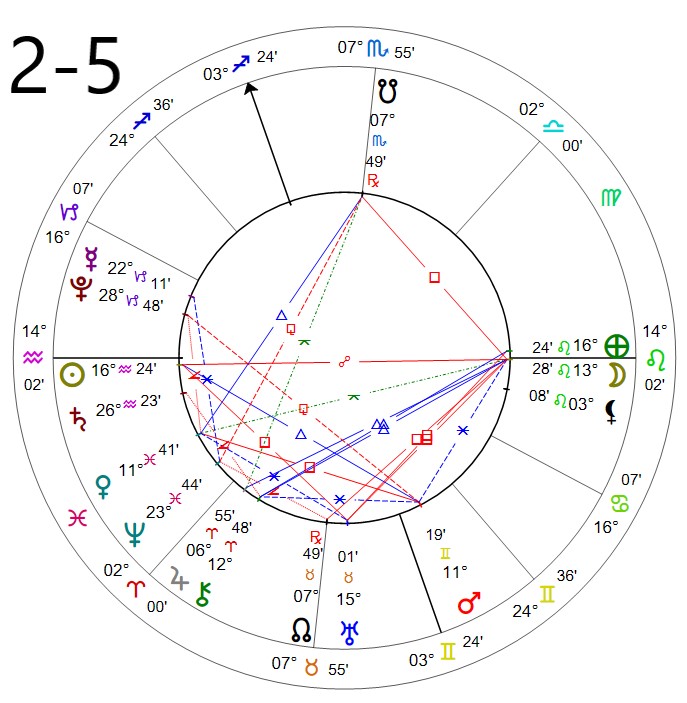Sat-Sun February 4-5, 2023

– Gibbous Moon Phase – trust, analyze, prepare, digest, alchemy
– Full Moon Phase @ 4:28 PM 2/5 – illumination, realization, fulfillment, shadow, relationships, experience
– Moon in CANCER – 2/4 Void of Course 4:19 AM – 3:48 AM Moving to Leo
– Best Days (from the Farmer’s Almanac) – Feb 4th – Dig Holes, Hatch Eggs, Host a Party, Kill Plant Pests, Mow to Increase Growth, Paint, Travel for Pleasure, Entertain Friends, Cut Firewood, Get Married. Feb 5th – Dig Post Holes, Ask for Loan, Cut Hair to Slow Growth, Pick Apples and Pears, Dry Fruits and Vegetables, Quit Smoking, Entertain Friends, Start Diet to Lose Weight, Host a Party, Wash Wooden Floors, Kill Plant Pests, Mow to Slow Growth, Paint, Perform Demolition
– Planting Calendar (from the Farmer’s Almanac) – Feb 4th – 8th – Clear ground, turn sod, kill plant pests.
– Aspect of the Aeon Sophia: (Wisdom): – Matangi – Goddess of the Wind
– Aspect of the Aeon Thelete: (Will/Desire): Seth – God of the North, God of Enlightenment
– Sabian Symbol for the Solar-Lunar Month – New Moon in Aquarius SUN: – SUN/MOON – 03 AQUARIUS: an unexpected thunderstorm (& EARTH: – 03 LEO: an epidemic of mumps)
– Sabian Symbol for the Solar-Lunar Year: –“a flock of wild geese”

SUN –
16 AQUARIUS: a big businessman at his desk
17 AQUARIUS: a watchdog standing guard protecting his master and his possessions
EARTH –
16 LEO: brilliant sunshine just after a storm
17 LEO: a volunteer church choir makes a social event of rehearsal
It has been a long strange weekend with many things happening – many of which have gone unnoticed here in the US. We have been too busy watching the Chinese Weather Balloon fly over our Nuke silos and all the way across the country . . .til we shot it down off the coast of South Carolina. Seems to have pissed off the Chinese fiercely. And BRandon’s weaknbess has pissed all of us off . . . except democrats and the mainstream media of course.
But anyhow, Did you know:

Imbolc 2/1 – Imbolc or Imbolg (Irish pronunciation: [ɪˈmˠɔlˠɡ]), also called Saint Brigid’s Day (Irish: Lá Fhéile Bríde; Scottish Gaelic: Là Fhèill Brìghde; Manx: Laa’l Breeshey), is a Gaelic traditional festival. It marks the beginning of spring, and for Christians, it is the feast day of Saint Brigid, Ireland’s patroness saint. It is held on 1 February, which is about halfway between the winter solstice and the spring equinox. Historically, its traditions were widely observed throughout Ireland, Scotland and the Isle of Man. Imbolc is one of the four Gaelic seasonal festivals, along with: Bealtaine, Lughnasadh and Samhain. (Copied word for word from Wikipedia)

Candlemas 2/2 – known as the Feast of the Presentation of Jesus Christ, the Feast of the Purification of the Blessed Virgin Mary, or the Feast of the Holy Encounter, is a Christian holiday commemorating the presentation of Jesus at the Temple. It is based upon the account of the presentation of Jesus in Luke 2:22–40. Under Leviticus 12, a woman was to be purified by presenting a lamb as a burnt offering, and either a young pigeon or dove as sin offering, 33 days after a boy’s circumcision. It falls on 2 February, which is traditionally the 40th day (postpartum period) of and the conclusion of the Christmas–Epiphany season. While it is customary for Christians in some countries to remove their Christmas decorations on Twelfth Night (Epiphany Eve), those in other Christian countries historically remove them after Candlemas. On Candlemas, many Christians (especially Eastern Orthodox, Roman Catholics, and mainline Protestants such as Lutherans, Anglicans and Methodists) also take their candles to their local church, where they are blessed and then used for the rest of the year; for Christians, these blessed candles serve as a symbol of Jesus Christ, who is the Light of the World. (Also copied word for word from wikipedia)

Groundhog Day 2/2 – If you missed it, the Weather Rat in Punksatawney saw its shadow. Groundhog Day (Pennsylvania German: Grund’sau dåk, Grundsaudaag, Grundsow Dawg, Murmeltiertag; Nova Scotia: Daks Day) is a popular North American tradition observed in the United States and Canada on February 2. It derives from the Pennsylvania Dutch superstition that if a groundhog emerges from its burrows on this day and sees its shadow due to clear weather, it will retreat to its den and winter will go on for six more weeks; if it does not see its shadow because of cloudiness, spring will arrive early. (also copied word for word from Wikipedia)

Full Moon 2/5- While January is traditionally the coldest month of the year in the northern hemisphere, the heaviest snow usually falls a month later. It’s only natural then that the name for February’s full Moon among Native American tribes of the north and east was the Full Snow Moon.
Among the Mi’kmaq people of Eastern Canada, the driving winds that often accompanied February snows led to the name, Snow Blinding Moon. Because this month’s typically harsh weather conditions made hunting very difficult, other common names for February’s Moon included the Hunger Moon, the Bony Moon, and the Little Famine Moon.
To the early American colonists, the optimal time for trapping beaver, fox and mink was the dead of winter when these animals’ coats were at their fullest. So to them, February’s Moon was known as the Trapper’s Moon. (Copied from the Farmer’s Almanac)

Chinese Lantern Festival 2/5 – The Lantern Festival (traditional Chinese: 元宵節; simplified Chinese: 元宵节; pinyin: Yuánxiāo jié), also called Shangyuan Festival (traditional Chinese: 上元節; simplified Chinese: 上元节; pinyin: Shàngyuán jié), is a Chinese traditional festival celebrated on the fifteenth day of the first month in the lunisolar Chinese calendar, during the full moon. Usually falling in February or early March on the Gregorian calendar, it marks the final day of the traditional Chinese New Year celebrations. As early as the Western Han Dynasty (206 BC–AD 25), it had become a festival with great significance. (also copied word for word from Wikipedia)
